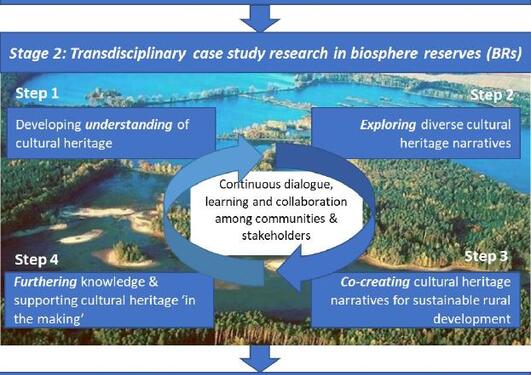Positive future visions for Nordhordland UNESCO Biosphere
January 25, the CULTIVATE project held a Seeds of Good Anthropocenes workshop in Nordhordland UNESCO Biosphere Reserve. The goal was to envision positive, more sustainable futures for cultural heritage and cultural landscapes in the Nordhordland region.
Main content
The interactive Seeds of Good Anthropocenes (SoGA) method was developed by researchers at the Stockholm Resilience Centre (goodanthropocenes.net). In SoGA workshops, participants are asked to envision a realistic and optimistic vision of what the world can be, and to identify existing “seeds” (initiatives, projects, networks, etc.) in their region that can be upscaled to reach their vision for the future. In the CULTIVATE version of this method, the vision was set to year 2034 and related to the local context for cultural heritage and cultural landscapes in Nordhordland UNESCO Biosphere Reserve.
Different stakeholders within cultural heritage, agriculture and cultural landscapes, municipalities, and business from all municipalities in the Bisphere Reserve were invited to attend the workshop. On teh workshop day, we were 14 participants from four municipalities at Helsehuset in Knarvik, and we worked in four separate groups to create positive visions for Nordhordland. Inger Måren and Silje Östman from the CULTIVATE team (University of Bergen), and Kari Natland and Kjersti Isdal from the Biosphere Reserve team (Region Nordhordland) were there to guide the groups through the work with defining visions, seeds and pathways for achieving these positive visions.
The groups were very productive and engaged, and we struggled to stay within our time frame because there was so much to discuss! The groups produced four different future visions. There was a clear focus on preserving cultural landscapes and traditional food production systems, utilizing existing resources sustainably, and reusing and recycling old materials. Maybe all of these visions will be realized in the next ten years!
The four main visions for future Nordhordland:
- A future for the proud farmer who distributes products locally and maintains the cultural landscapes.
- From consumption to utilization: Using knowledge from the past to live sustainably with existing resources in our landscapes. Consumerism is abandoned.
- Backwards is the new forward: Preserved, re-visualised and sustainable.
- 2034: Nordhordland is a region that protects and utilises resources in a sustainable way
Similar workshops will be held in the other countries participating in the CULTIVATE-project, Scotland, Estonia and Czechia, and we are looking forward to comparing the outcomes in these four UNESCO Biosphere Reserves.










